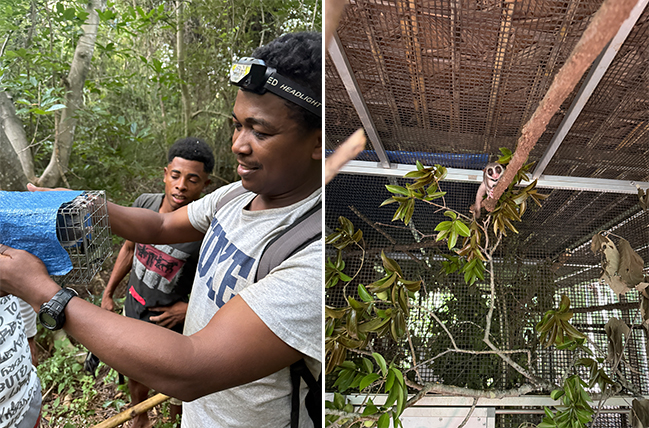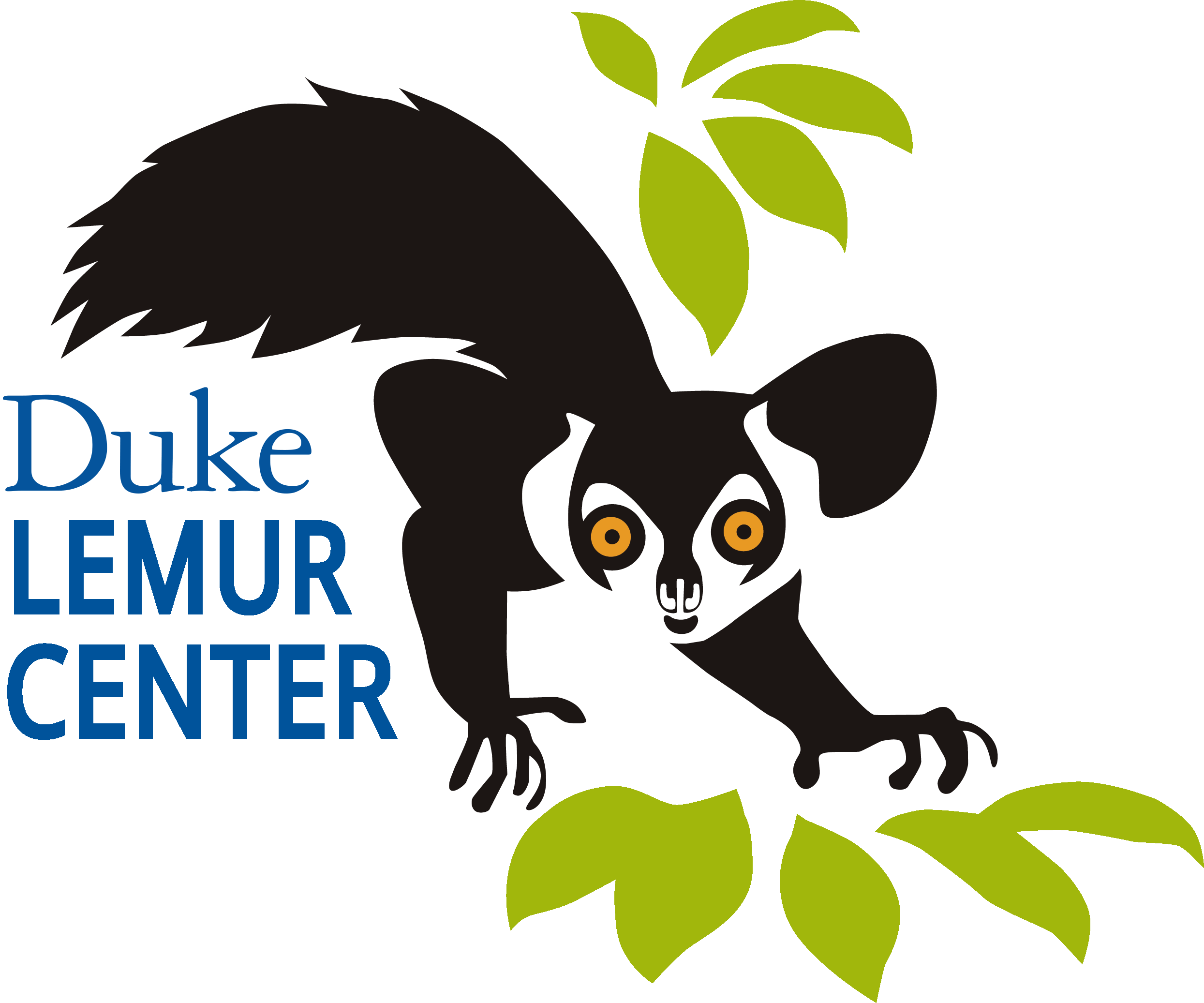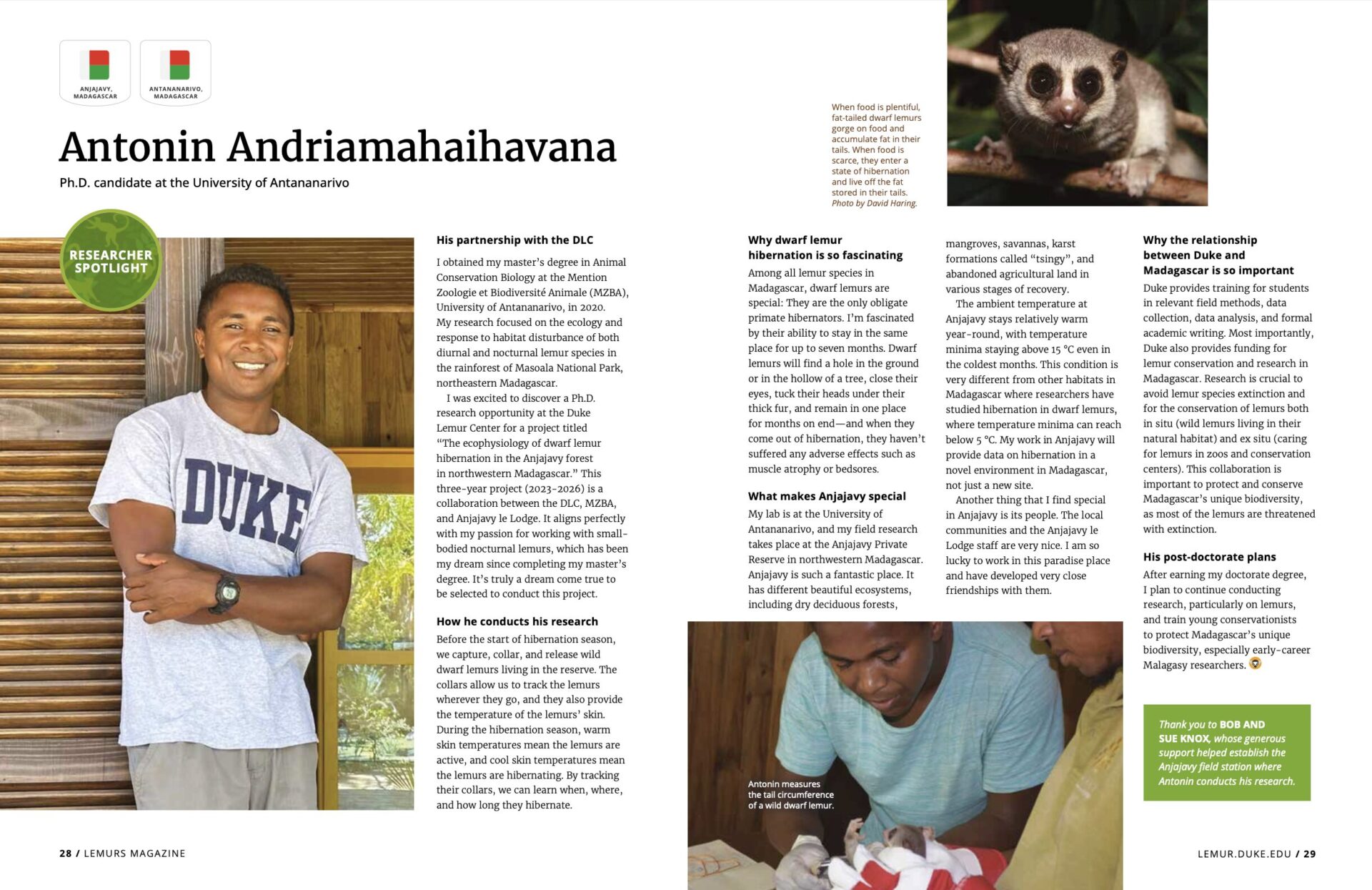Written by Antonin Andriamahaihavana, Ph.D. candidate at the University of Antananarivo. Originally published in LEMURS Magazine: The “Where” Issue in February 2025.
His partnership with the DLC
I obtained my master’s degree in Animal Conservation Biology at the Mention Zoologie et Biodiversité Animale (MZBA), University of Antananarivo, in 2020. My research focused on the ecology and response to habitat disturbance of both diurnal and nocturnal lemur species in the rainforest of Masoala National Park, northeastern Madagascar.
I was excited to discover a Ph.D. research opportunity at the Duke Lemur Center for a project titled “The ecophysiology of dwarf lemur hibernation in the Anjajavy forest in northwestern Madagascar.” This three-year project (2023-2026) is a collaboration between the DLC, MZBA, and Anjajavy le Lodge. It aligns perfectly with my passion for working with small-bodied nocturnal lemurs, which has been my dream since completing my master’s degree. It’s truly a dream come true to be selected to conduct this project.
How he conducts his research
Before the start of hibernation season, we capture, collar, and release wild dwarf lemurs living in the reserve. The collars allow us to track the lemurs wherever they go, and they also provide the temperature of the lemurs’ skin. During the hibernation season, warm skin temperatures mean the lemurs are active, and cool skin temperatures mean the lemurs are hibernating. By tracking their collars, we can learn when, where, and how long they hibernate.
Why dwarf lemur hibernation is so fascinating
Among all lemur species in Madagascar, dwarf lemurs are special: They are the only obligate primate hibernators. I’m fascinated by their ability to stay in the same place for up to seven months. Dwarf lemurs will find a hole in the ground or in the hollow of a tree, close their eyes, tuck their heads under their thick fur, and remain in one place for months on end—and when they come out of hibernation, they haven’t suffered any adverse effects such as muscle atrophy or bedsores.

Antonin in his lab at the University of Antananarivo. Photo by Sara Sorraia.
What makes Anjajavy special
My lab is at the University of Antananarivo, and my field research takes place at the Anjajavy Private Reserve in northwestern Madagascar. Anjajavy is such a fantastic place. It has different beautiful ecosystems, including dry deciduous forests, mangroves, savannas, karst formations called “tsingy”, and abandoned agricultural land in various stages of recovery.
The ambient temperature at Anjajavy stays relatively warm year-round, with temperature minima staying above 15 °C even in the coldest months. This condition is very different from other habitats in Madagascar where researchers have studied hibernation in dwarf lemurs, where temperature minima can reach below 5 °C. My work in Anjajavy will provide data on hibernation in a novel environment in Madagascar, not just a new site.
Another thing that I find special in Anjajavy are its people. The local communities and the Anjajavy le Lodge staff are very nice. I am so lucky to work in this paradise place and have developed very close friendships with them.
Why the relationship between Duke and Madagascar is so important
Duke provides training for students in relevant field methods, data collection, data analysis, and formal academic writing. Most importantly, Duke also provides funding for lemur conservation and research in Madagascar. Research is crucial to avoid lemur species extinction and for the conservation of lemurs both in-situ (wild lemurs living in their natural habitat) and ex-situ (caring for lemurs in zoos and conservation centers). This collaboration is important to protect and conserve Madagascar’s unique biodiversity, as most of the lemurs are threatened with extinction.
His post-doctorate plans
After earning my doctorate degree, I plan to continue conducting research, particularly on lemurs, and train young conservationists to protect Madagascar’s unique biodiversity, especially early-career Malagasy researchers.

Left: Antonin and the research team humanely trapping wild dwarf lemurs in the Anjajavy forest. Right: A wild dwarf lemur settles in for hibernation season at the Anjajavy Field Station. Photos by Miriam Gordan.


